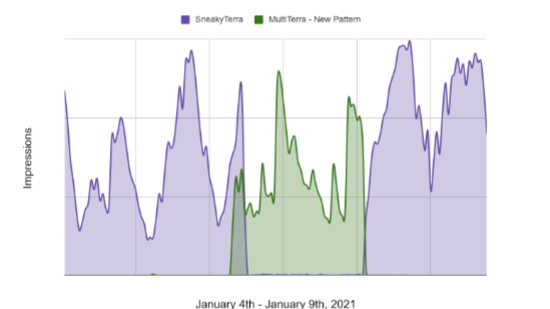DoubleVerify Stops Ad Fraud Schemes Linked Under OctoBot
Family of scams launched in November 2019

A recently identified ad fraud scheme targeting connected TV devices was shut down by DoubleVerify, which determined that the new plot was part of a family of CTV ad capers that first surfaced in November 2019.
DoubleVerify dubbed the fraud family OctoBot, and said the schemes starting with LowerTerra were related and becoming increasingly sophisticated. Other varieties included Cello Terra, MultiTerra, FauxTerra and SneakyTerra
Also Read: DoubleVerify Report Highlights CTV Fraud
The seven Octobot schemes generated billions of ad calls and spoofed thousands of apps. At their peaks, MultiTerra was stealing $1 million a month from unprotected advertisers and SneakyTerry was robbing $5 million a month.
Also Read: Massive New CTV Advertising Fraud Scheme Detected
DoubleVerified said its clients remained protected throughout the iterations of OctoBot.
The schemes were enabled through three basic steps. First, the perpetrators got users to install fraudulent apps, including games like Hole Ball King. They then begin selling non-existent CTV inventory to buyers. Then, instead of running ads, the mobile apps would fire the pixels used to track ads. Because the ad creative wasn’t loading, pixels could be fired more frequently, getting more fraudulent impressions to be counted.
Broadcasting & Cable Newsletter
The smarter way to stay on top of broadcasting and cable industry. Sign up below
MultiTerra hijacked residential IP addresses to spoof CTV and mobile traffic. SneakyTerra began by by obtaining impression trackers from multiple ads through spoofed Supply-Side Ad Insertion calls. Next, SneakyTerra would insert these impression trackers into a real ad, use this ad to bid on real inventory and then serve the ad (stuffed with multiple impression trackers) to a real device during a user’s session. Although only one ad would play, multiple impression trackers would fire, DoubleVerify said.
SneakyTerra would actually stop its activity at the same time a new pattern of MultiTerra began. Then, when MultiTerra would stop its activity, SneakyTerra would become active again.
The DV Fraud Lab uses sophisticated tools and algorithms to accurately identify individual impressions that are infected by fraud.
In 2020, DV launched the industry’s first CTV Certification for programmatic platforms, designed to protect advertisers from fraud and invalid traffic in the CTV space.
In order to be certified by DV for CTV targeting, a platform must demonstrate the ability to prevent fraud and IVT by applying DV’s pre-bid app and device fraud protection for CTV inventory transactions. DV found that non-certified programmatic CTV saw a fraud rate over 11 times higher than CTV transacted through DV-certified marketplaces and approximately 9 times higher than publisher-direct buys.
Certified partners currently include Amobee, Adelphic, MediaMath, SpotX, The Trade Desk, Verizon Media, VideoAmp and Xandr.
Jon has been business editor of Broadcasting+Cable since 2010. He focuses on revenue-generating activities, including advertising and distribution, as well as executive intrigue and merger and acquisition activity. Just about any story is fair game, if a dollar sign can make its way into the article. Before B+C, Jon covered the industry for TVWeek, Cable World, Electronic Media, Advertising Age and The New York Post. A native New Yorker, Jon is hiding in plain sight in the suburbs of Chicago.

